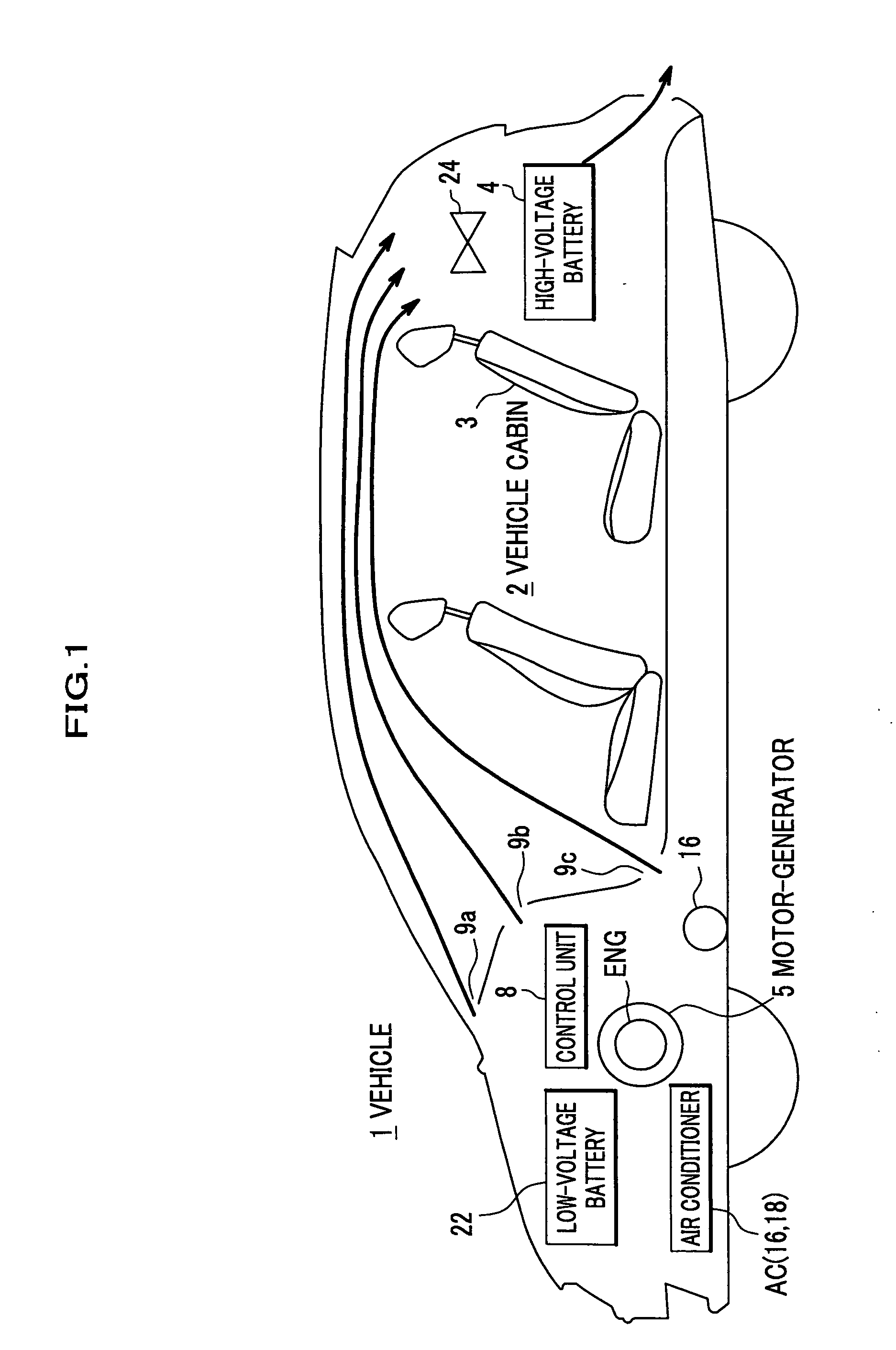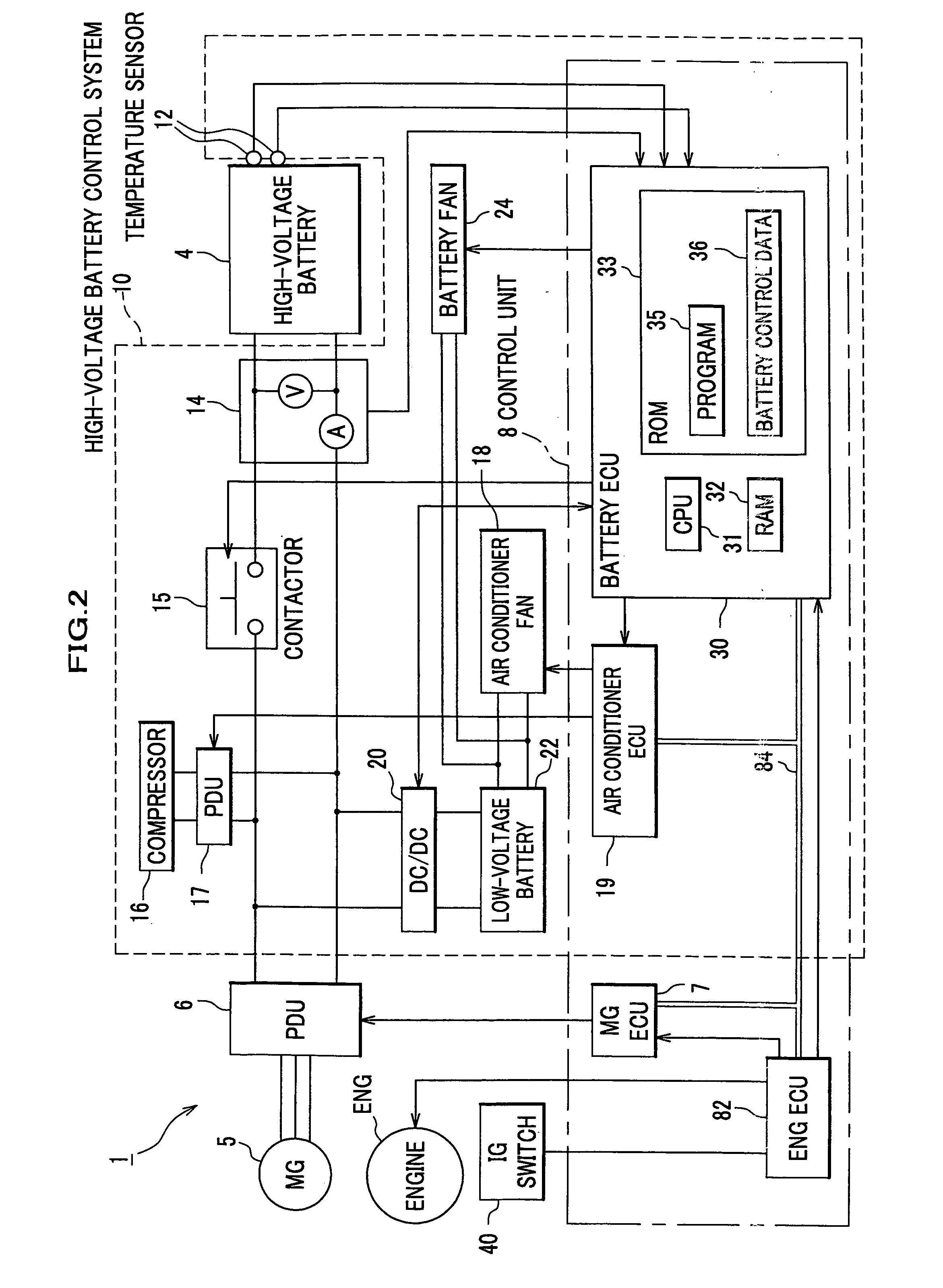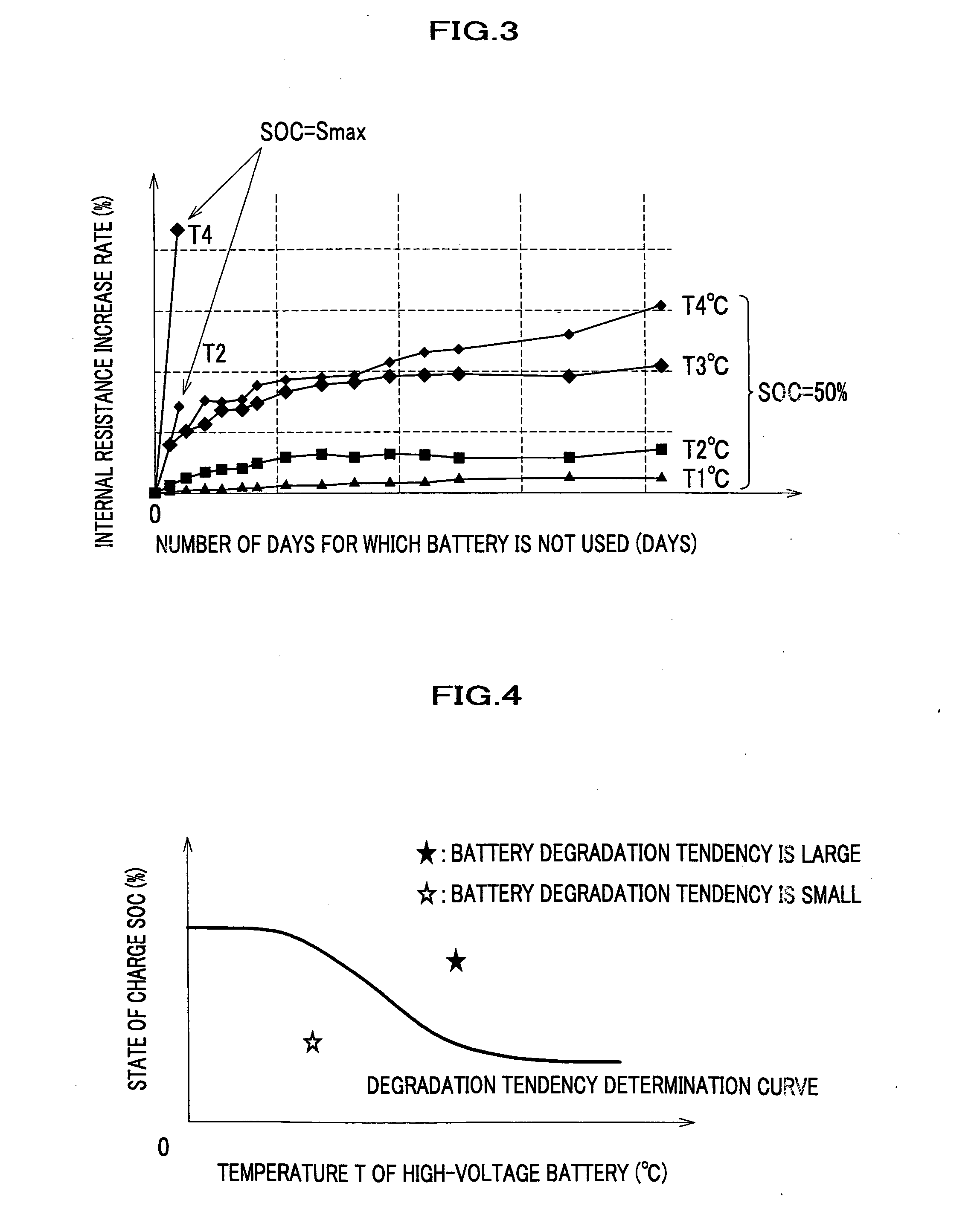Controller of electric vehicle
a technology of electric vehicles and controllers, applied in the direction of battery/fuel cell control arrangements, electric devices, electrochemical generators, etc., can solve the problem of inability to prevent battery performance degradation, and achieve the effect of preventing battery performance degradation
- Summary
- Abstract
- Description
- Claims
- Application Information
AI Technical Summary
Benefits of technology
Problems solved by technology
Method used
Image
Examples
first embodiment
[0041]Next, here will be described a controller (control unit) in an electric vehicle according to an embodiment of the present invention in detail, referring to the accompanying drawings. The same elements or parts are designated with the same references throughout the drawings.
[0042]First of all, referring to FIGS. 1 and 2, here will be described a structure of an electric vehicle (referred to as “a vehicle”, hereafter) including a high-voltage battery control system and a battery ECU (Electrical Control Unit).
[0043]FIG. 1 is a schematic sectional view of a vehicle which uses a high-voltage battery (storage battery) including a lithium-ion battery and can prevent performance degradation of the storage battery during a soak (in a soak state where the vehicle is stopping and the storage battery is not being charged or discharged) according to the embodiment. FIG. 2 is a schematic principal block diagram conceptually showing a structure of the vehicle 1 focusing on a high-voltage bat...
second embodiment
[0076]FIG. 8 is a diagram illustrating battery control data 36 used in the second embodiment. FIG. 9 is a flowchart showing a process flow of Step S58a for preventing degradation performed in the second embodiment instead of Step S58 for preventing the degradation in FIG. 6. In the embodiment, as shown in FIG. 8, besides the degradation tendency determination curve data, a predetermined temperature Ttha is used.
[0077]In Step S56 in FIG. 6, when it is determined that the degradation tendency is large (“Yes”), the process proceeds to Step S58a. As shown in FIG. 9, in Step S70 in Step S58a, the contactor 15 is turned on so that the battery fan 24 is driven. Then, the process proceeds to Step S72. After that, the battery ECU 30 determines whether the battery temperature T exceeds the predetermined temperature Ttha. When the battery temperature T dose not exceed the predetermined temperature Ttha (“No”), the process of Step S58a ends (, that is, only the battery fan 24 is driven). Then, ...
third embodiment
[0080]FIG. 10 is a diagram illustrating a degradation tendency determination curve used in the third embodiment. FIG. 11 is a flowchart showing a process flow of Step S58b for preventing degradation performed in the third embodiment instead of Step S58 for preventing degradation in FIG. 6. As shown in FIG. 10, in the third embodiment, besides the degradation tendency determination curve data, a predetermined temperature Ttha and a predetermined SOC value SOCtha are used.
[0081]Except that Step S72 shown in FIG. 9 is replaced with Step S72a, Step S58b is same with Step S58a. To describe the difference, in Step S72a, it is determined whether the battery temperature T exceeds the predetermined temperature Ttha and the SOC value SOC exceeds the predetermined SOC value SOCtha.
[0082]Therefore, according to the embodiment, in a case where the SOC value SOC is higher than the SOC threshold SOCth, both of the battery fan 24 and the air conditioner AC are driven when the battery temperature T ...
PUM
| Property | Measurement | Unit |
|---|---|---|
| voltage | aaaaa | aaaaa |
| stores power | aaaaa | aaaaa |
| temperature | aaaaa | aaaaa |
Abstract
Description
Claims
Application Information
 Login to View More
Login to View More - R&D
- Intellectual Property
- Life Sciences
- Materials
- Tech Scout
- Unparalleled Data Quality
- Higher Quality Content
- 60% Fewer Hallucinations
Browse by: Latest US Patents, China's latest patents, Technical Efficacy Thesaurus, Application Domain, Technology Topic, Popular Technical Reports.
© 2025 PatSnap. All rights reserved.Legal|Privacy policy|Modern Slavery Act Transparency Statement|Sitemap|About US| Contact US: help@patsnap.com



